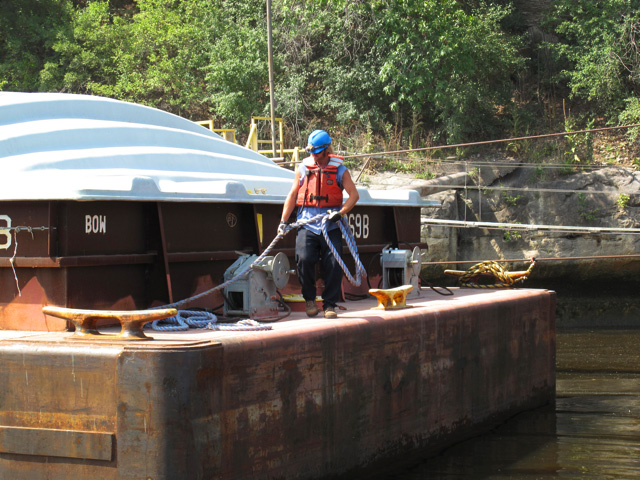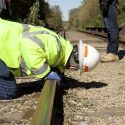UW–Madison freight engineers helping guide state marine transportation

Investments in marine highways and ports in Wisconsin create high-value jobs and mitigate the environmental effects of moving freight, says Ernest Perry, principal investigator of the Wisconsin Commercial Ports Development Initiative (WCPDI). Ernest Perry
Investment in “marine highways” is vital to the future of Wisconsin’s marine freight system, according the University of Wisconsin–Madison’s National Center for Freight and Infrastructure Research and Education (CFIRE).
CFIRE researchers help public and private organizations across the state prioritize projects as they maintain and develop Wisconsin’s marine freight system, an asset to a strong economy and a healthy environment.
Top among those priority projects, says CFIRE researcher Ernest Perry, are the state’s shipping routes and associated infrastructure.
“One of the things our research demonstrates is that our marine highway system is vital to supporting the growth we will be seeing in freight across Wisconsin over the next two decades and beyond,” says Perry, who leads the center’s Wisconsin Commercial Ports Development Initiative (WCPDI). “Investments in our marine highways and our ports benefit our state in a number of ways, from creating high-value jobs to mitigating the environmental effects of moving freight. Our data show that this is a great place to focus if we’re interested in supporting our manufacturers, producers, and shippers.”
Taking a phased approach, the ports development initiative aims to increasing freight movement at Wisconsin commercial ports.
WCPDI’s recently released second report compared four marine highway corridors on the Great Lakes and Upper Mississippi River with their parallel highway corridors. In all cases, the assessment shows that marine corridors are a critical part of the overall multimodal freight system, and can provide lower-cost service to Wisconsin industries, businesses and shippers.
“We’re taking a big-picture approach and considering our priorities at the state level, not just as individual port operators,” says Dean Haen, port director at Green Bay and president of the Wisconsin Commercial Ports Association (WCPA). “Marine freight options are on everyone’s mind as we work to move an ever-increasing amount of goods.”
The Wisconsin Department of Transportation (WisDOT) made immediate use of the data.
“These findings were incorporated into the state’s freight plan and also will be incorporated into future water transportation planning,” says Sheri Walz, WisDOT harbors and waterways program manager.
Other organizations using CFIRE research to guide policy and planning include the Upper Mississippi River Basin Association and the Conference of the Great Lakes and St. Lawrence Governors and Premiers. And the prospect of marine development outlined in the phase two report supporting broader economic growth and employment has brought together the WCPA Implementation Working Group, including WCPA, WisDOT, Wisconsin Economic Development Corporation (WEDC), Wisconsin Department of Natural Resources, Wisconsin Coastal Management Program, Wisconsin Department of Agriculture, Trade and Consumer Protection, UW–Madison, and five ports.
“This group will continue to focus on growing Wisconsin’s commercial ports as well as advance collaboration among the participating ports,” says Kathy Heady, a development manager at WEDC. “Ultimately, we are growing Wisconsin’s economy.”



